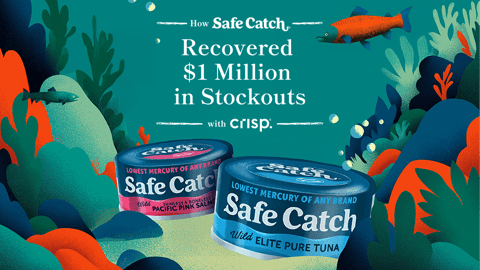Inside CAULIPOWER's Forecasting Superpower
For all the words that can describe the consumer goods industry, “consistent” is unlikely to be the one chosen any time soon.
But for frozen food brand CAULIPOWER, which uses vegetables to create healthier and easier versions of foods tasting like their non-veggie counterparts, consistency is precisely what’s been required in order to successfully scale.
As the brand grew, connecting the dots between its business functions had become an increasing challenge, preventing the company from operating at peak efficiency.
“There was some disconnect between supply planning and what was happening on the customer shelf,” Ben Hosseinzadeh, CAULIPOWER VP, supply chain, tells CGT.
Delays in publishing new forecasts were also proving to be problematic, which meant it couldn’t obtain all of the interconnected data points required for more accurate short- and long-term planning with its manufacturing partners.
CAULIPOWER in turn partnered with Unioncrate to improve its forecast accuracy and demand planning consistency, deploying the solution provider’s Integrated Business Planning platform. It selected the IBP in part because it wanted a solution that uses predictive analytics to support its forecasting function.
During the pandemic, the dramatic shifts in consumer buying patterns has found CAULIPOWER navigating the highs and lows of panic buying and periodic stabilization, as well as managing the accompanying transportation challenges. These new forecasting capabilities provided the brand with a foundation to build on and an understanding of where to begin forecasting the new normal.
While it’s not a silver bullet, Hosseinzadeh says, it certainly gave them a head start — and thereby a competitive advantage — so it didn’t have to start from scratch.
“It gave us a baseline [for transportation] that we could work off, giving us an understanding of where we to begin, and then tack on any shifts that we saw manually.”
It’s also enabled CAULIPOWER's supply chain, sales and finance teams to working collaboratively, affording each team with the proper perspective.
As a result, CAULIPOWER has recorded sales and supply chain benefits that include consistent and long-term forecasting, measuring this success by the accuracy of the forecast to actual sales.
For other brands seeking to improve internal collaboration and forecasting accuracy, especially during the health crisis, Hosseinzadeh is a strong proponent of more frequent collaboration across sales, operations and finance teams — a lot more, to be precise.
“Because we are in a rapidly changing environment, having access to real-time information and changes from manufacturing output to shelf performance is critical,” he notes.
It's certainly a daunting task, Hosseinzadeh concedes, especially considering that many people and companies don’t exactly have the opportunity to meet weekly with their partners.
“They don’t necessarily want to evaluate the inventory levels of the customers’ warehouses, and they don’t have time to get entire group together on a weekly basis to ensure there’s proper touchpoints to make shifts.”
But the bottom line is that the more touchpoints a brand can connect from its customers, manufacturing partners and internally, the better it will position itself for success. As a result of CAULIPOWER's over-communication, the company has recorded fill rates that are much higher than industry standards last year.
“That’s only because we’re able to be connected on a weekly basis as rapidly as changes were taking place in the industry,” he says.







